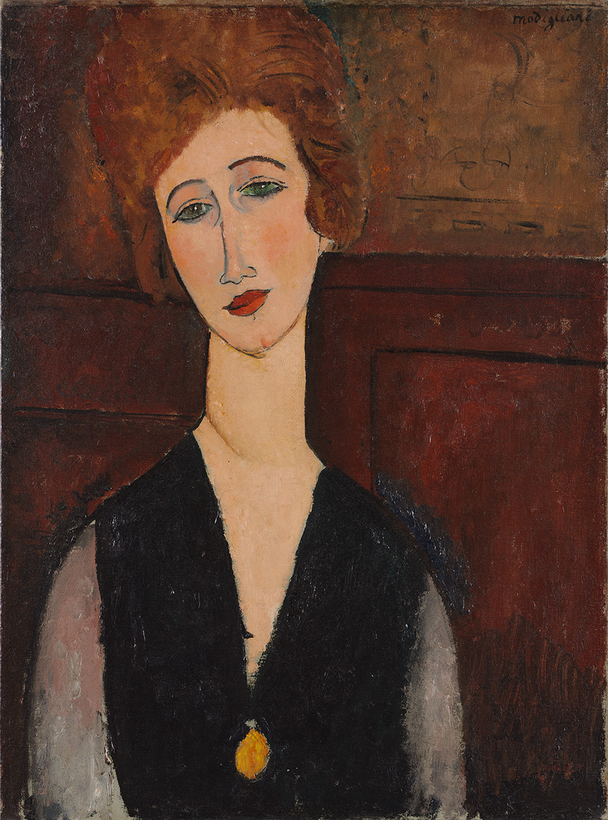Can Amedeo Modigliani save Johnny Depp? Having emerged damaged but technically victorious from his legal dispute with Amber Heard—his former wife—Depp now finds himself essentially excluded from the kind of mainstream Hollywood cinema from which he derived his considerable wealth and legions of fans. With far fewer options on the table, he has now opted to direct Modi, a movie about the Italian painter who was a key figure—if largely unsuccessful during his lifetime—in the Parisian avant-garde before and during W.W. I. In a grace note, Depp’s film finds a small role for Al Pacino, who back in the 80s had tried and failed to get his own Modigliani film off the ground.

No doubt Depp is attracted to, and perhaps sees himself as, this archetypal bohemian. Modigliani’s life included relentless substance abuse, a string of intense love affairs, a struggle for acceptance by the artistic establishment, and—one thing that Depp has managed to avoid—an early death (in 1920, at 35), from tuberculosis. Depp’s movie is in fact an adaptation of Dennis McIntyre’s 1978 play, Modigliani, which looks closely at the painter’s difficulty making money from his art.
As luck would have it, an exhibition that just opened at the Musée de l’Orangerie, in Paris, tackles this very subject. “Amedeo Modigliani: A Painter and His Dealer” examines the artist’s relationship with Paul Guillaume, prominent among those who represented and sold his work.(McIntyre’s play, however, focuses on another of Modigliani’s dealers, Léopold Zborowski, who gave him a room and a few francs a day in return for a regular supply of paintings.)

Guillaume’s influence on Modigliani’s artistic development (and his posthumous reputation) was arguably the most important of all the artist’s dealers. His collection of African carvings, objects of special fascination for the Parisian avant-garde of the early 20th century, gave him entrée into that fevered creative hothouse. Modigliani, like Picasso before him, absorbed the mask-like, hieratic faces into his figure painting.

After becoming Modigliani’s official dealer, in 1914, Guillaume rented a studio for the artist, included his work in his gallery exhibitions, and promoted him in Les Arts à Paris, the journal he founded in 1918. In return, a grateful Modigliani painted his portrait and inscribed it with the words “Novo Pilota” (New Pilot). And while acting as an adviser to the collector Albert C. Barnes—the wealthy industrial chemist from Philadelphia, whose buying sprees in Paris in the 1910s and 1920s formed the basis of the Barnes Foundation—Guillaume was instrumental in getting the first Modiglianis over to America. (Guillaume’s own collection, held by his widow, was eventually acquired by the Musée de l’Orangerie in 1963.)

In recent years, Modigliani has become the center of an astonishingly high-value industry, a consequence of the enormous sums that his paintings now achieve. He may have died in a charity hospital, but three of his celebrated nudes rank 12, 19, and 28 on the list of highest-selling paintings of all time (respectively, $170 million, $157 million, and $118 million). With so much money at stake, it’s hardly a surprise that the Modigliani legacy now includes fractiously competing authentication committees, tidal waves of fakes, and even the occasional fraud. Depp, perhaps, is thinking about his own legacy. What can he be looking to achieve with this film? Redemption, almost certainly, and maybe the chance to channel the heat, feel the fire, of Modigliani’s ultimate triumph over adversity.
“Amedeo Modigliani: A Painter and His Dealer” is on at Musée de l’Orangerie, in Paris, through January 15
Check out AIR MAIL’s Arts Intel Report, our newly revamped research tool for what to do and where and when to do it
Andrew Pulver writes about film for The Guardian and about art for The Art Newspaper. He lives in Oxford

